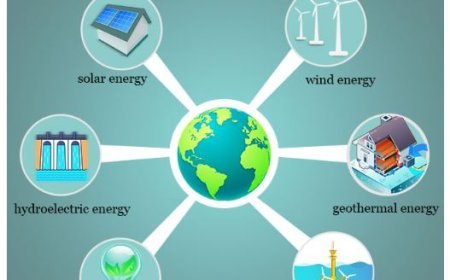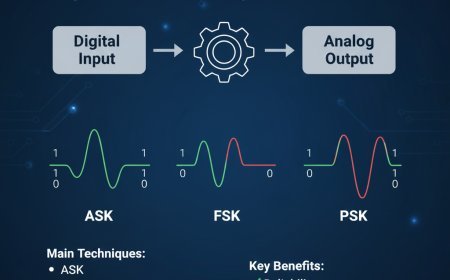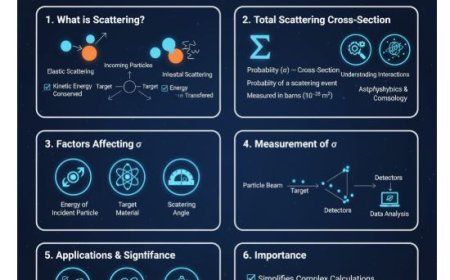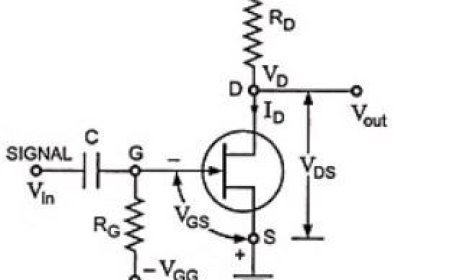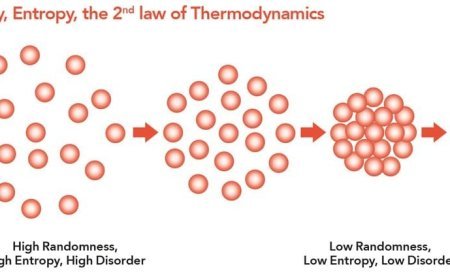G.M. Counters and Scintillation Counters – Radiation Detection in Nuclear Physics
Learn how Geiger-Müller (G.M.) counters and scintillation counters detect different types of radiation such as alpha, beta, and gamma rays. Understand their working principles, components, and uses in medical, research, and environmental applications.
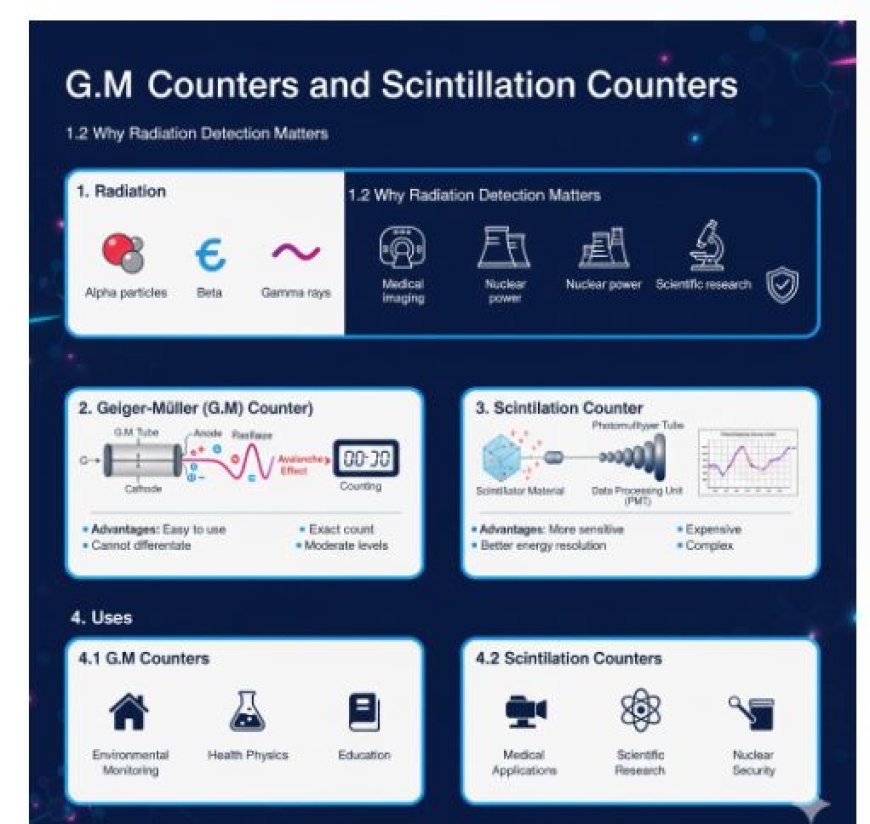
G.M. Counters and Scintillation Counters
In physics, particularly in nuclear and particle physics, a major topic you will learn about is how to identify radiation. The two main devices used for this are Geiger-Müller (G.M.) counters and scintillation counters.
1. Radiation
Before diving into the detection mechanisms, it’s essential to understand what radiation is.
1.1 Types of Radiation
- Alpha particles are heavy, strongly charged particles that consist of 2 protons and 2 neutrons.
- Beta particles are light particles that can be negatively charged (electrons) or positively charged (positrons).
- Gamma rays are a type of high-energy radiation similar to X-rays but with even more energy.
1.2 Why Radiation Detection Matters
Detecting radiation is important for safety in various fields, including:
- Medical imaging
- Nuclear power
- Scientific research
2. Geiger-Müller (G.M.) Counter
The Geiger-Müller counter is a commonly used tool for detecting radiation.
2.1 Main Idea
- The G.M. counter identifies radiation by measuring the ionization of gas inside a sealed tube.
2.2 Parts
- G.M. Tube: A circular tube made of metal or glass, filled with an inert gas (e.g., helium, neon, or argon) at low pressure.
- Electrodes: Two electrodes create an electric field inside the tube.
- Power Supply: A high voltage is applied to help detect ionization.
2.3 How It Works
- Ionization: Radiation passes through the tube, ionizing the gas and creating positive ions and free electrons.
- Avalanche Effect: The free electrons accelerate towards the positive electrode, colliding with gas molecules and creating more ionization (electron avalanche).
- Pulse Creation: This cascade effect produces a detectable electrical pulse.
- Counting: Electronics convert the pulse into a numerical count displayed on a meter.
2.4 Advantages and Disadvantages
- Advantages:
- Easy to use.
- Provides an exact count of ionization events.
- Disadvantages:
- Cannot differentiate between types of radiation.
- Can only detect moderate levels of radiation.
3. Scintillation Counter
Scintillation counters are another important type of radiation detector, but they work differently from G.M. counters.
3.1 Main Idea
- Scintillation counters detect light (scintillation) produced when radiation interacts with certain materials.
3.2 Parts
- Scintillator Material: A crystal or plastic that emits light upon contact with ionizing radiation.
- Common materials: Sodium iodide (NaI) and plastic scintillators.
- Photomultiplier Tube (PMT): Converts the light flashes from the scintillator into electrical signals.
- Data Processing Unit: Analyzes the signal and provides a measurement.
3.3 Working Mechanism
- Interaction: Ionizing radiation strikes the scintillator, exciting its atoms.
- Light Emission: As the excited atoms return to their ground state, they emit light (scintillation).
- Light Detection: The photomultiplier tube (PMT) captures the emitted light and converts it into an electrical signal.
- Signal Processing: The electrical signal is amplified and displayed for analysis.
3.4 Advantages and Disadvantages
- Advantages:
- More sensitive than Geiger-Müller counters.
- Better energy resolution, allowing differentiation between radiation types.
- Disadvantages:
- More expensive and complex than G.M. counters.
- Requires careful calibration and maintenance.
4. Uses
Both G.M. counters and scintillation counters have applications in various fields.
4.1 G.M. Counters
- Environmental Monitoring: Measuring radioactivity in surroundings.
- Health Physics: Ensuring safety in laboratories handling nuclear materials.
- Education: Used in physics laboratories for training.
4.2 Scintillation Counters
- Medical Applications:
- Used in gamma cameras for nuclear medicine imaging.
- Scientific Research:
- Used for precise radiation measurements in experiments.
- Nuclear Security:
- Used for detecting hazardous radioactive materials in various locations.
What's Your Reaction?









